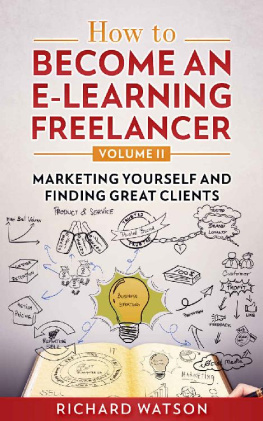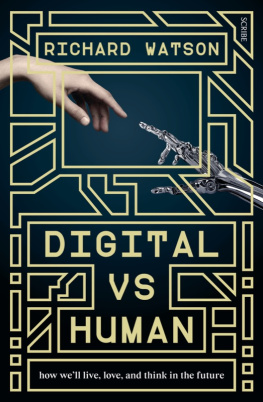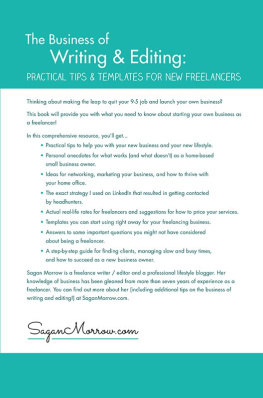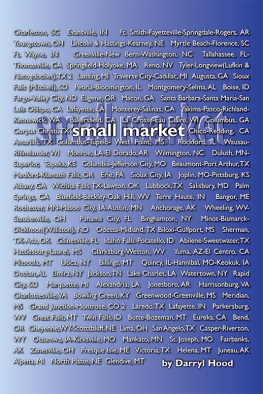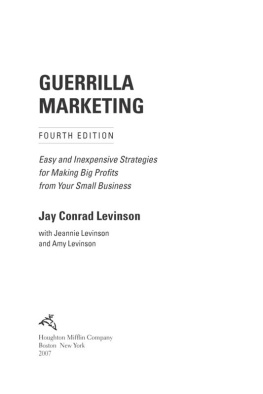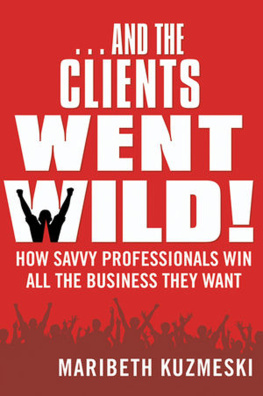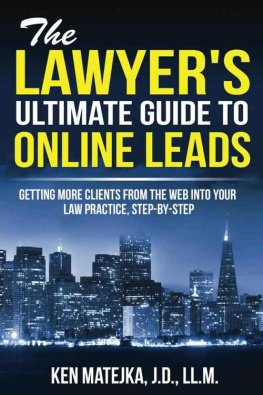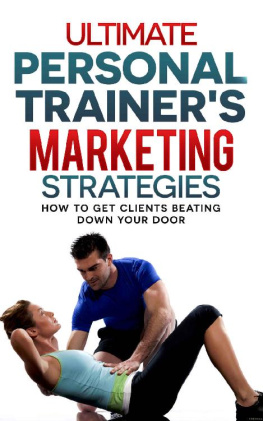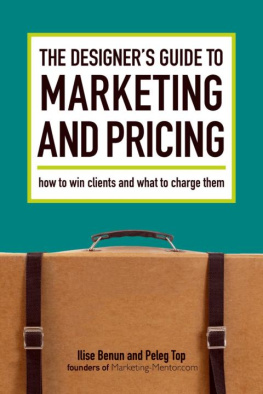How to Become an e-Learning Freelancer
Volume II Marketing Yourself and Finding Great Clients
By Richard Watson
Copyright 2017 Richard Watson.
All rights reserved. This book or any portion thereof may not be reproduced or used in any manner whatsoever without the express written permission of the publisher except for the use of brief quotations in a book review.
For permission requests and feedback, please contact the author via email at rwatson@bridgehillLS.com or via Twitter at @rwatsonid.
Acknowledgements
I would like to acknowledge and thank the following people for their help during the writing of this book:
- My familySusan, Morgan, and Matthew, for always believing in me and supporting my passion for e-Learning.
- My sister Pat, for motivating me to take an idea and turn it into something tangible and meaningful for others.
- Jaime, for the editorial, sequencing, and formatting help.
- The authors and experts who agreed to be cited; I truly appreciate the opportunity to share your insights.
- My peers in the Articulate e-Learning Heroes forum, for encouraging me as an author and an e-Learning Designer, and for inspiring me with their honesty and creativity.
And most of all, Id like to thank you , the reader, for taking time to purchase and read this book. I hope you find the information and advice included here useful in your own freelance e-Learning career!
Table of Contents
Introduction
Welcome to How to Become an e-Learning Freelancer, Volume II ! As a follow-up to Volume I , this book is written to help you take your new freelance e-Learning business to the next level and begin marketing yourself to potential clients. Now that you have all of the fundamentals of your business in place after reading Volume I , its time to start looking for the clients and projects that will enable your professional success!
In this book, Ill walk you through both the strategies and practices behind successfully marketing yourself, from articulating your own brand and identity all the way through creating a sales pipeline and meeting with clients. By following along with the process, youll be able to create a marketing plan that will help find you the right e-Learning work with the right people.
Portions of the How to Become an e-Learning Freelancer e-Book series originally appeared on my blog at www.BridgeHillLS.com , although each chapter has been revised and expanded for this publication.
Why Marketing Matters
Most people think of marketing in pretty simple terms: you offer a service, your marketing efforts alert potential customers about you, some of them hire you, and then you ride off into the sunset in professional bliss. Easy, right?
Unfortunately, this perspective only tells half the story. While your marketing strategy should be in part focused on getting your name and your work in front of potential clients, it also exists to articulate the kind of work you want to do, and the kind of clients you work best with. For example, if you choose to market yourself with a particular niche within e-Learning, say, creating compliance-based training, youre likely to invite more of the same, which may or may not be your goal. So its important to think of marketing yourself as having three primary goals:
- Make people aware of your brand (so theyll hire you)
- Define the type of work you want to do (so that youre only doing work that makes you happy)
- Define the type of clients you want (so youre playing to your strengths)
While this may seem like common sense, Ive found that its easy to lose sight of the importance of making sure that your marketing efforts are always working towards these objectives. In each chapter of this book, Ill be examining a different aspect of promoting your own value, as well as finding clients that align with your abilities and ambitions. Lets get started!
Chapter One: The 4 Keys to Successfully Marketing Your e-Learning Business
When I first started freelancing as an e-Learning Designer, I thought that finding new clients would simply be a matter of searching job websites and e-Learning freelance boards to see who was hiring, and then applying for those positions where I felt I was a good fit. I had experience with job applications, so I felt good about my chances.
And then, like so many other times in the early days of my freelance career, reality hit. As I struggled to find new clients, money was tight, and I began to doubt my own abilities. After a lot of research, reflection, and discussions with my peers, I realized that it was time to start doing something I had never felt comfortable doing before: marketing myself.
As a concept, marketing myself felt like bragging at first, and bragging doesnt come naturally to me. But as I got more into the habits of self-promotion, I adopted a new mindset: self-marketing isnt bragging; its highlighting your value for others who could benefit from your expertise. (Like Muhammad Ali said, It aint bragging if its true.) Whats more, as I was studying my most successful peers, I saw that strong self-marketing could be done with grace instead of arrogance, and it would ultimately be necessary to my long-term success.
So for this chapter, Id like to share four cornerstones of my own approach to self-marketing as an e-Learning freelancer.
1. Set Up a Web Portfolio and Showcase a Variety of e-Learning Examples, Even if You Think Some of Your Work Isnt Good Enough for Public Consumption.
Im always my own biggest critic, and often times that leads me to shy away from sharing particular pieces. Why show examples of my work that dont reflect the full scope of my abilities? Thats a waste of time, right?
While this approach makes sense on paper, the reality is that its more important to share a variety of different examples of your skills than it is to spend time perfecting one or two portfolio pieces. In fact, Ive even seen portfolios that include work from an e-Learning Designers university yearsand while those pieces arent always stellar, showing a progression of talent can be incredibly powerful. Imagine a prospective client seeing how much better your work became over the course of a few years; doesnt that tell a better story than a handful of examples from the recent past?
In addition, its important to make sure that youre including a variety of e-Learning examples. Show prospective clients that you can do more than create shiny PowerPoint presentations and static PDFs! A mix of the following is a good place to start:
- Scenarios/Branching
- Storytelling
- Learning Games
- Interactive Quizzes
- Demonstrations
- Samples of your writing
- Sample storyboards
- Graphic Design samples
You never know what a client is going to need, and its important to convey that you have a wide variety of skills. Sometimes, clients themselves arent even sure what exactly they need, and seeing the breadth of your expertise can help them understand what theyre looking for and the many different ways you can help them.
2. Make Sure Your Portfolio Pieces Include Information About Both the Objectives and the Results of Your e-Learning Work.
This was a tough one for me; I started out wanting to come up with dazzling e-Learning assets that would impress potential clients, and it took me a while to understand that sharing the end results of my effortswhat my e-Learning materials had achievedwas much more important to the business mindset that many of my clients have.
Consider it this way: if a potential client views a learning game youve created, they have to translate the value of that game into how it might work for their business. They may even dismiss the games value because of their preconceived notions about games. But if you include information about the goals of your game, and the benefit it had for end users, youre doing the translating for them, making it much easier for them to understand the value youll bring to them as a freelancer. If you do this, youre presenting yourself not just as a resource, but as a problem-solver.

